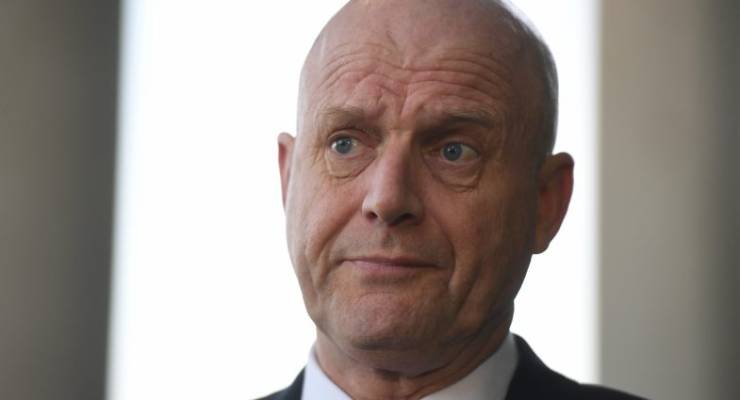
As well as providing progressives with an opportunity for schadenfreude, yesterday’s resolution of the upper house count for the New South Wales state election offered useful pointers to how the Senate result might look on May 18.
The headline-grabbing aspect of the result was the narrow failure of former Liberal Democrats senator David Leyonhjelm in his bid to keep his career afloat through a move to state politics.
Leyonhjelm had opted to run for the Legislative Council because its low 4.5% quota for election gave him a more achievable objective than a third term in the Senate, where special circumstances had favoured him in both 2013 (when his party drew first position on a vast ballot paper) and 2016 (when the double dissolution made 12 seats available rather than the usual six).
The other strand of his strategy, it seemed, had been to tap into the alt-right zeitgeist through a concerted campaign of triggering liberal snowflakes — most notably through his reflections on Greens Senator Sarah Hanson-Young’s sex life, which are the subject of an ongoing defamation action.
It was mainly for this reason that news of Leyonhjelm’s defeat was enthusiastically received on the leftward end of social media, notwithstanding that he had lost out to Rod Roberts of One Nation, a party that shares none of the Liberal Democrats’ common ground with the left on social policy.
That complication aside, there were other aspects of the result to cheer the left — such as the end of a four-decade winning streak for Fred Nile’s Christian Democratic Party, which had hitherto won upper house seats at 10 successive elections since Nile himself was first elected in 1981 as a strapping young lad of 47.
It was also a bad show for Cory Bernardi’s Australian Conservatives, which managed all of 0.6% of the vote — a second failure to add to its debut outing in South Australia last year, when it lost an upper house seat that Family First (with which the party had merged) had won at three previous elections without Bernardi’s help.
In fact, probably the only thing Australian Conservatives achieved in New South Wales was to cruel the chances of the Christian Democrats, reflecting the dangers of vote fragmentation in a system where preferences are optional rather than compulsory.
Transposing state election results to the federal sphere is normally a bad idea, but the upper house minor party vote offers an exception to the rule.
What is becoming known as the “middle finger” vote — in which the disaffected park support with whichever populist or protest vehicle happens to catch their fancy on polling day — appears to account for a consistent quarter of the New South Wales electorate, as reflected in both the Legislative Council and 2016 Senate results.
With parties no longer able to use group voting tickets to marshal their preferences around, and the new system set to apply at a normal half-Senate election for the first time, it seems Senate contenders will need something approaching 6% to be competitive, and around 8% to feel entirely confident.
The New South Wales result illustrates that the only player doing that sort of business out of the myriad minor parties of the right is One Nation, whose share of the vote was 6.9%.
Even One Nation would likely fall short in New South Wales if the state upper house numbers were replicated at the federal election, the more likely result being three seats for the Coalition, two for Labor and one for the Greens.
Indeed, the biggest winner out of fragmentation on the political right could prove to be its mortal enemies in the Greens, who will no longer suffer missing out with vote shares at or approaching double figures — as was known to happen in the past, when group voting tickets caused micro-party preferences to flow overwhelmingly to anyone but them.








Disappointed The Socialist Alliance didn’t get a spot to provide some balance in the Macquarie St retirement home.
Agreed, they did terrible unfortunately.
Ah well, at least yesterday’s worst news was balanced out by yesterday’s best news. Goodbye David, and good riddance.
I can’t agree. We’ve gone from bad to worse, no balancing out in that.
Goodbye David sounds pretty hollow when we have to say Hello Rod.
I’m gleefully supping my cold schadenfreude at being rid of Leyonhjelm with a celebratory dessert to follow that Borey Carnadi did so poorly.
Lie on helm and the Christian democrats. I’ll happily sacrifice a one nation pawn to rid us of those pests. Plus Corey Bernardi making no impression.
It was a real prat fall.
The small conservative reptiles are eating themselves, hopefully the big conservative reptiles also follow that trend come may 18th.